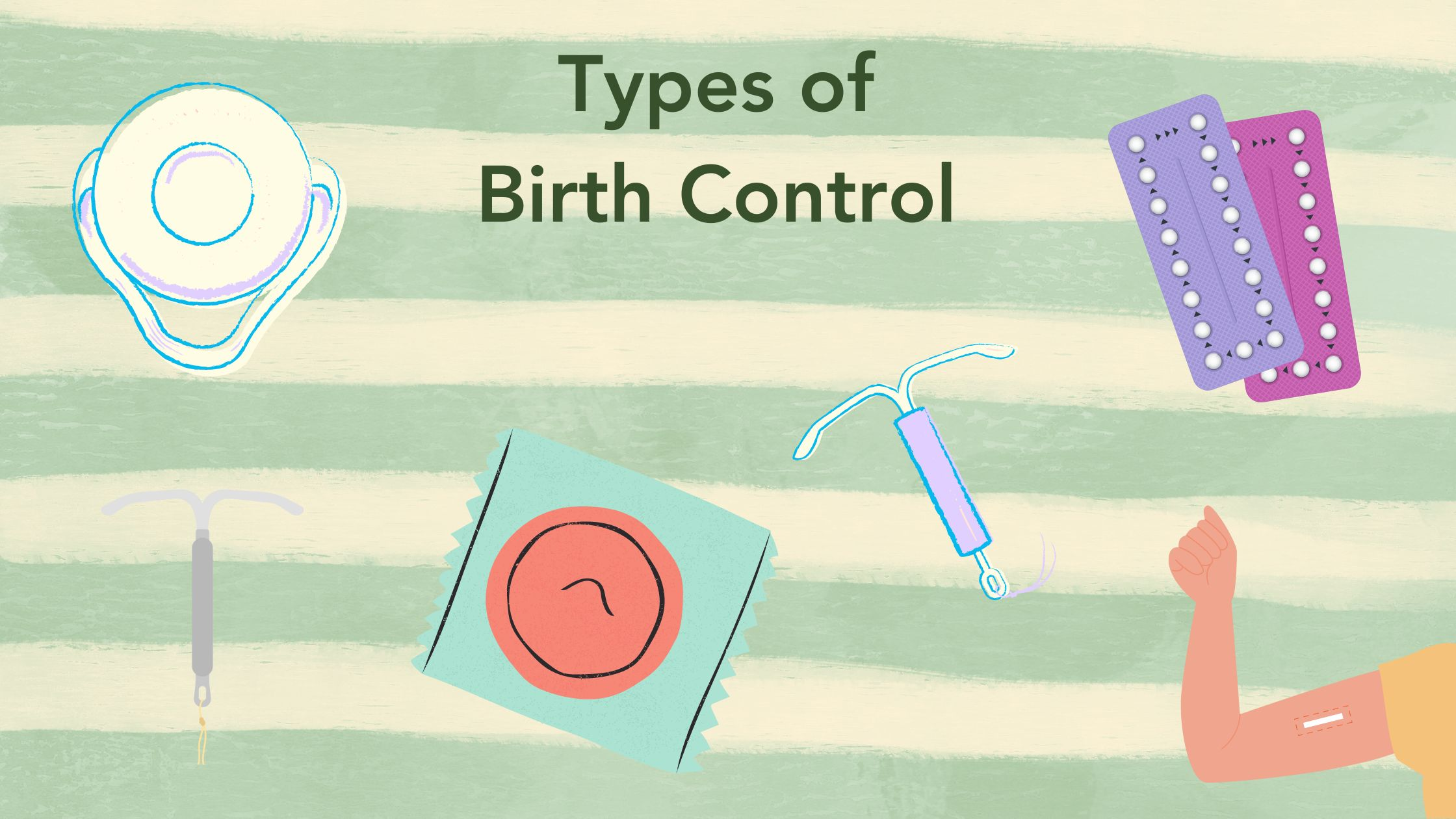Tubal ligation, often referred to as “getting your tubes tied”, is a surgical procedure that involves cutting, tying, or sealing a woman’s fallopian tubes. This prevents eggs from traveling through the fallopian tubes and reaching the uterus, therefore preventing pregnancy. It is a highly effective form of permanent contraception that offers women greater control over their reproductive choices.
What is Tubal Ligation?
Tubal ligation, also referred to as female sterilization or tubectomy, is a common surgery used for permanent birth control. The fallopian tubes are cut, blocked, or sealed in this operation. This stops the movement of the eggs from the ovaries to the uterus. It also as prevents sperm from reaching the egg. As a result, pregnancy can’t happen.
Tubal ligation is a widely chosen method of contraception that empowers women to take control of their reproductive futures. This simple outpatient surgical procedure is a highly effective and permanent method of contraception. It can be performed at any time, including during or after childbirth or as part of another abdominal surgery.
While it is considered a permanent form of contraception, a reversal procedure is possible, requiring major surgery, albeit with no guarantee of restoring fertility. Therefore, it is important for women to carefully consider the permanence of the procedure and to discuss all available options with their doctor.
Can You Get Pregnant With Your Tubes Tied?

Yes, you can. According to the American College of Obstetricians and Gynecologists (ACOG), pregnancy rates within ten years of tubal ligation vary between 18 and 37 out of 1,000 women, depending on the method used to close the tubes.
These numbers tell us that even though tubal ligation is a highly effective way to prevent pregnancy, no method of contraception is 100 percent effective. While the chances of pregnancy are very low – which is a good thing and also the reason why most women opt for it – it is still possible for some women to become pregnant after the procedure.
In the event of a pregnancy, the likelihood of having an ectopic pregnancy rises following the procedure. A full-term pregnancy is also possible if the fallopian tubes grow back after the procedure.
Chances of Pregnancy After Tubal Ligation
While the chances of getting pregnant after getting your tubes tied are very low, it is not impossible.
One study published in Obstetrics & Gynecology in 2011 found that the risk of pregnancy after tubal ligation was 7.5 per 1,000 procedures, with the highest risk in the first year after the procedure.
The American College of Obstetricians and Gynecologists (ACOG) states that the risk of pregnancy after tubal ligation is approximately 1 in 200 women over their lifetime.
However, the actual risk can vary depending on:
- method used to perform the procedure
- woman’s age at the time of the procedure
- surgeon’s experience
When tubal ligation fails, it can often be attributed to the presence of scar tissue obstructing the tubes or the development of an opening where the tubes were previously cut.
As an alternative to this procedure, more doctors are now suggesting salpingectomy, which involves the complete removal of the fallopian tubes. Not only does this method offer a higher degree of protection against ovarian cancer, but it also significantly lowers the chances of pregnancy. In fact, the occurrence of pregnancy following a salpingectomy is exceedingly rare, with only a few isolated cases reported in recent years.
It is also important to note that if a woman becomes pregnant after tubal ligation, there is a higher risk of ectopic pregnancy, which can be life-threatening if not detected and treated promptly.
Signs and Symptoms of Pregnancy After Tubal Ligation
The signs and symptoms of pregnancy after tubal ligation are similar to those of a normal pregnancy, which include:
- missed periods
- nausea
- vomiting
- breast tenderness
- fatigue
- frequent urination
A 2013 article in the Journal of Obstetrics and Gynecology Canada noted that diagnosing a pregnancy after tubal ligation is often difficult due to scar tissue and a lack of common pregnancy signs, like fetal movements.
If a woman who’s had her tubes tied experiences possible signs of pregnancy, she should get tested immediately to confirm whether or not she’s pregnant.
If she is pregnant post-procedure, immediate medical attention is required to determine where the pregnancy is and decide on the appropriate treatment.
Furthermore, the American College of Obstetricians and Gynecologists (ACOG) recommends that women who experience symptoms such as stomach pain or unusual vaginal bleeding after tubal ligation surgery should promptly see a doctor to exclude the chance of an ectopic pregnancy.
Chances and Symptoms of Ectopic Pregnancy

While rare, ectopic pregnancy can occur after getting your tubes tied. This is also the case if you use an intrauterine device (IUD) as a method of family planning.
An ectopic pregnancy is when a fertilized egg implants and starts developing outside of the uterus, typically in the fallopian tube.
According to a study published in the Journal of Obstetrics and Gynaecology Research in 2020, the incidence of ectopic pregnancy after tubal ligation was found to be 1.3-3.3% in women who underwent the procedure.
The study also found that the risk was higher in women at a young age, who had a history of infertility or had a history of pelvic inflammatory disease. The risk was also higher in women involved in partial removal of the fallopian tubes instead of complete removal.
Symptoms of an Ectopic Pregnancy
Initially, symptoms of an ectopic pregnancy can mimic a regular pregnancy, with common signs such as a missed period, breast tenderness, and nausea. Other symptoms might also persist which include:
- abdominal or pelvic pain
- vaginal bleeding that isn’t your period
- lower back pain
- cramping on one side of the pelvis
- shoulder pain
- Feeling weak, dizzy, and lightheaded
Women who have undergone tubal ligation and experience any of the above symptoms should seek medical attention immediately. An ectopic pregnancy can become life-threatening if left untreated, as it could lead to a ruptured fallopian tube, causing internal bleeding.
The doctor can diagnose ectopic pregnancy using ultrasound imaging to see where the pregnancy is developing and order blood tests to measure levels of hormones called human chorionic gonadotropin (hCG).
Treatment options are available and depend on the location and size of the ectopic pregnancy, as well as the woman’s overall health and desire for future fertility.
If your doctor detects an ectopic pregnancy during the early stages, a medication called methotrexate may be recommended. It can stop the growth of the fertilized egg or prevent bleeding. Your doctor will also observe your pregnancy hormone levels during the treatment.
If this approach proves to be ineffective, surgery may be required. Your doctor will try to repair the fallopian tube, but they may recommend removing it if it’s beyond repair.
How to Get Pregnant After Having Tubes Tied
Your desire and decision about family planning may change after your tubes are tied. Despite having undergone tubal sterilization, some women may, in fact, regret their choice and experience a yearning for a child later in time.
A medical study conducted by Obstetrics and Gynecology states that a substantial proportion of women who undergo tubal ligation eventually come to regret their decision. In fact, research has indicated that roughly 1 in 3 women who undergo this procedure will experience feelings of regret in the future.
Thankfully, there are 2 ways to get pregnant after tubal ligation – reversal surgery and in vitro fertilization (IVF).
1. Tubal Ligation Reversal
A tubal ligation reversal, also called tubal (re) anastomosis, involves a surgical procedure where a surgeon carefully reopens and reattaches the previously closed portions of both the left and right fallopian tubes. This allows the egg and the sperm to meet, fertilize inside the tube, and travel back to the uterus for implantation.
The success rate of this procedure is typically between 75 – 80 percent in the best-case scenario, but this depends on various factors, including:
- the length and health of your fallopian tubes
- your age
- type of surgery at the time of tubal ligation
- Presence of scar tissues
Women often prefer reversal surgery to in vitro fertilization (IVF) as it typically avoids the need for additional medical help, such as medicine or other procedures, to get pregnant. The hope is that conception will happen naturally through sexual activity.
Also, the risk of having twins is quite small with natural conception – just about 1 in 90 pregnancies.
But, there are drawbacks. Firstly, it is a significant surgical operation. Secondly, IVF becomes the only alternative if you don’t get pregnant after the reversal. Also, the surgery is complex and requires a long hospital stay.
2. Without Reversal – IVF
If you want to sidestep the potential problems and uncertainty of a tubal ligation reversal, thankfully, there’s another method to get pregnant.
In Vitro Fertilization (IVF) is a medical technique that takes eggs from a woman’s ovaries, fertilizes them with sperm in a lab dish outside the body, and then places the resulting embryo back into the woman’s womb to potentially grow into a pregnancy.
The main advantage of IVF is that it spares the woman from the major surgery needed for tubal reversal. Plus, with IVF, the woman can find out whether the procedure has been successful within 10 days, instead of waiting for a year or longer to get pregnant. These benefits make IVF an attractive choice for many couples dealing with fertility issues.
Still, IVF has its downsides. First, the woman must take drugs to boost the production of multiple eggs. If the initial try at IVF doesn’t work, the procedure may need to be repeated. If there are leftover frozen embryos from the first cycle, the second try can be cheaper and simpler. But, if there are no frozen embryos left, the cost for the second try is usually the same as the first.
And secondly, there’s always a chance of multiple pregnancies. This, however, can be reduced by limiting the number of embryos transferred during the procedure.
Alternatives to Tubal Ligation

There are several other options available for birth control that are less invasive and more easily reversible than tubal ligation.
Intrauterine Device (IUD)
One of these options is an intrauterine device (IUD). This small, T-shaped device is placed in the uterus and can prevent pregnancy for several years. They are easy to use, cost-efficient, and require little maintenance. You can have the IUD removed whenever you wish and your fertility will return quickly.
There are two kinds of IUDs: hormonal and non-hormonal. Hormonal IUDs release a tiny amount of progestin, which makes the cervical mucus thick enough to stop sperm from reaching the egg.
Non-hormonal IUDs use copper, creating a sperm-unfriendly environment.
IUDs are highly effective, boasting a success rate over 99 percent, and can stay in place for as long as 10 years.
Birth Control Pills
Birth control pills offer another choice for women seeking to avoid pregnancy. These pills have hormones that stop an egg from being released by the ovary.
Two types of birth control pills include: combination pills and progestin-only pills. Combination pills have both estrogen and progestin and are often used for birth control, while progestin-only pills only contain progestin.
If used properly and taken at the same time each day, these pills are highly effective, having a success rate over 99 percent.
Birth Control Implant
The implant (aka Nexplanon) is a small, flexible rod that is inserted under the skin of the upper arm. This rod releases a small amount of progestin, which prevents ovulation and thickens the cervical mucus to prevent sperm from reaching the egg. Nexplanon is highly effective, with a success rate of over 99%, and can remain in place for up to 5 years. You can conceive shortly after you get it removed.
Condoms
Condoms are a barrier method of contraception that prevent sperm from reaching the egg. There are two types of condoms available: male condoms and female condoms. Male condoms are placed over the penis before sex, while female condoms are inserted into the vagina before sex. Condoms are highly effective when used correctly, with a success rate of over 98%.
Abstinence
Abstinence is the only 100% effective form of birth control, as it involves not having sex at all. By abstaining from sexual activity completely, pregnancy can be avoided altogether.
While this may not be a practical option for everyone, abstinence is the only way to completely eliminate the risk of pregnancy.
Takeaway
- Tubal ligation, or “tube tying,” is a surgery to prevent pregnancy.
- It’s highly effective, but not 100% foolproof, with 18-37 pregnancies per 1,000 women within 10 years.
- Chances of pregnancy post-procedure depend on method, woman’s age, and surgeon’s experience.
- Some doctors suggest salpingectomy, or tube removal, to further lower pregnancy risk and protect against ovarian cancer.
- Post-tubal ligation pregnancies have higher risk of being ectopic and life-threatening.
- Symptoms of such pregnancies are often hard to diagnose due to scar tissue and altered signs.
- If desiring children post-procedure, options include tubal reversal and IVF, each with their own risks and benefits.
- Alternatives to tube tying include IUDs, pills, implants, condoms, and abstinence.
- It’s crucial for women to consider the procedure’s permanence and to discuss all options with their healthcare provider.
References
Rajaretnam N, Okoye E, Burns B. Laparotomy. [Updated 2023 May 17]. In: StatPearls [Internet]. Treasure Island (FL): StatPearls Publishing; 2023 Jan-. Available from: https://www.ncbi.nlm.nih.gov/books/NBK525961/Mayo Clinic. (2023). Minimally invasive surgery. https://www.mayoclinic.org/tests-procedures/minimally-invasive-surgery/about/pac-20384771The American College of Obstetricians and Gynecologists. Laparoscopy. Retrieved August 3, 2023, from https://www.acog.org/womens-health/faqs/sterilization-by-laparoscopyPeterson, H. B., Xia, Z., Hughes, J. M., Wilcox, L. S., Tylor, L. R., & Trussell, J. (1996). The risk of pregnancy after tubal sterilization: findings from the U.S. Collaborative Review of Sterilization. American journal of obstetrics and gynecology, 174(4), 1161–1170. https://doi.org/10.1016/s0002-9378(96)70658-0Date, S. V., Rokade, J., Mule, V., & Dandapannavar, S. (2014). Female sterilization failure: Review over a decade and its clinicopathological correlation. International Journal of Applied and Basic Medical Research, 4(2), 81-85. https://doi.org/10.4103/2229-516X.136781Planned Parenthood. (n.d.). How effective is the birth control implant? Retrieved August 3, 2023, from https://www.plannedparenthood.org/learn/birth-control/birth-control-implant-nexplanon/how-effective-is-the-birth-control-implantPlanned Parenthood. (n.d.). How effective are condoms? Retrieved August 3, 2023 https://www.plannedparenthood.org/learn/birth-control/condom/how-effective-are-condoms
